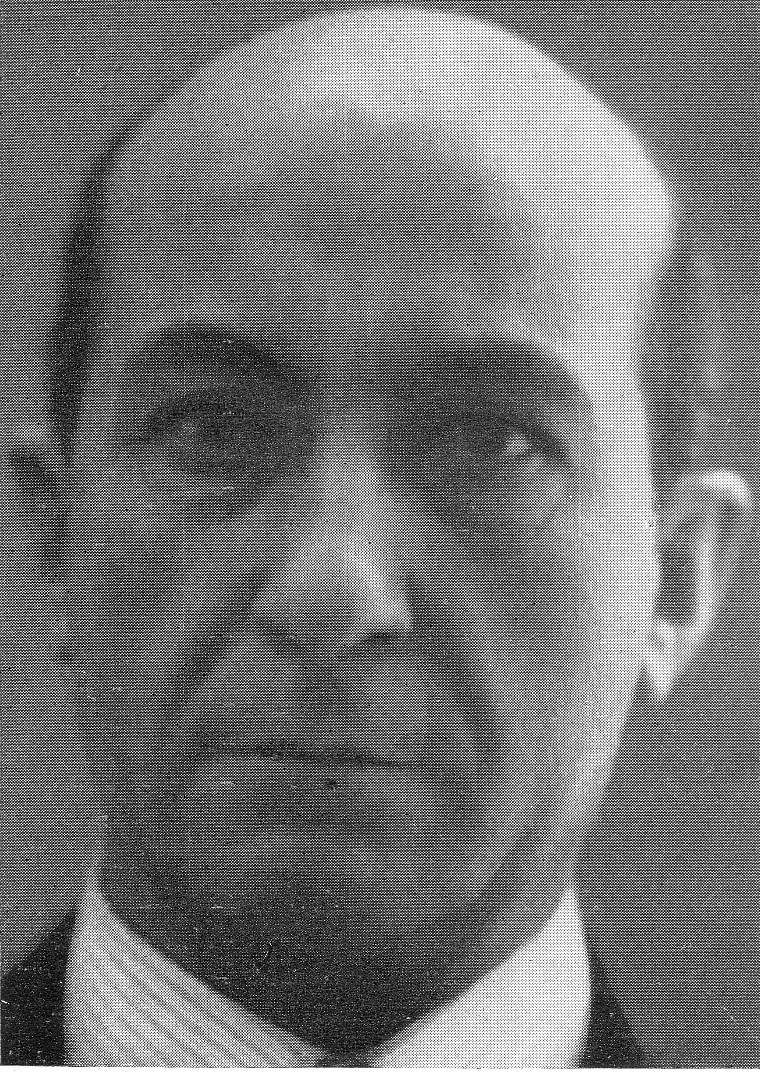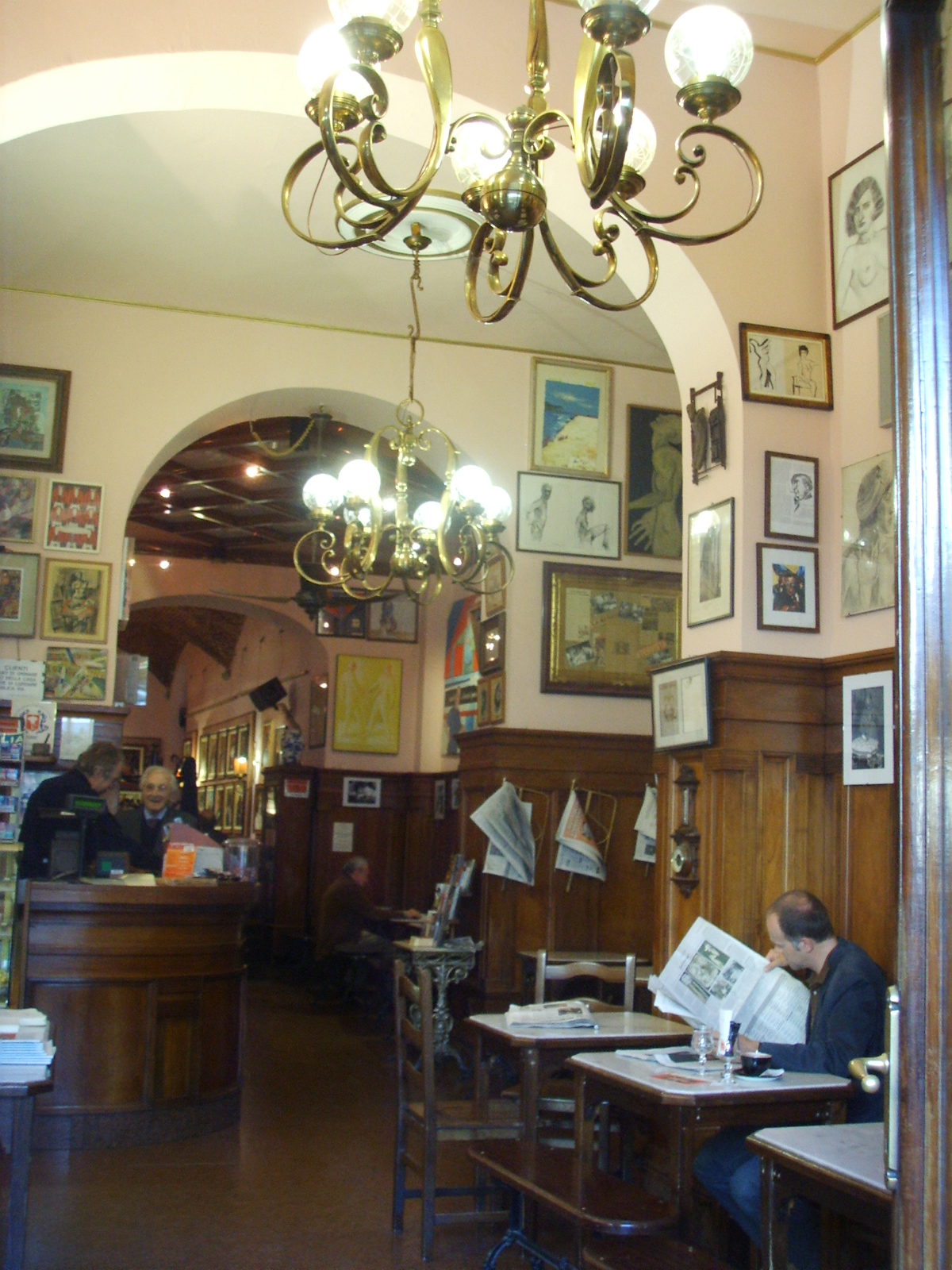Ardengo Soffici on:
[Wikipedia]
[Google]
[Amazon]
 Ardengo Soffici (7 April 1879 – 19 August 1964) was an Italian writer, painter, poet, sculptor and intellectual.
Ardengo Soffici (7 April 1879 – 19 August 1964) was an Italian writer, painter, poet, sculptor and intellectual.
 After visiting the Futurists' Exhibition of Free Art in Milan, he wrote a hostile review in ''La Voce''. The leading Futurists
After visiting the Futurists' Exhibition of Free Art in Milan, he wrote a hostile review in ''La Voce''. The leading Futurists
 Soffici continued to paint and write until his death in
Soffici continued to paint and write until his death in
Estorick Collection of Modern Italian Art
* {{DEFAULTSORT:Soffici, Ardengo 1879 births 1964 deaths People from the Province of Florence Italian male writers Italian Futurist painters Italian military personnel of World War I Futurist writers Italian Futurism Italian fascists People of Montmartre Italian prisoners of war in World War II World War II prisoners of war held by the United Kingdom World War II civilian prisoners
 Ardengo Soffici (7 April 1879 – 19 August 1964) was an Italian writer, painter, poet, sculptor and intellectual.
Ardengo Soffici (7 April 1879 – 19 August 1964) was an Italian writer, painter, poet, sculptor and intellectual.
Early life
Soffici was born in Rignano sull'Arno, nearFlorence
Florence ( ; it, Firenze ) is a city in Central Italy and the capital city of the Tuscany Regions of Italy, region. It is the most populated city in Tuscany, with 383,083 inhabitants in 2016, and over 1,520,000 in its metropolitan area.Bilan ...
. In 1893 his family moved to the latter city, where he studied at the Accademia from 1897 and later at the Scuola Libera del Nudo of the academy.
Career
In 1900 he moved from Florence toParis
Paris () is the Capital city, capital and List of communes in France with over 20,000 inhabitants, most populous city of France, with an estimated population of 2,165,423 residents in 2019 in an area of more than 105 km² (41 sq mi), ma ...
, where he lived for seven years and worked for Symbolist journals. While in Paris, during his time at the Bateau-Lavoir, he became acquainted with Braque, Derain, Picasso, Juan Gris
José Victoriano González-Pérez (23 March 1887 – 11 May 1927), better known as Juan Gris (; ), was a Spanish painter born in Madrid who lived and worked in France for most of his active period. Closely connected to the innovative artistic ge ...
and Apollinaire.
On returning to Italy
Italy ( it, Italia ), officially the Italian Republic, ) or the Republic of Italy, is a country in Southern Europe. It is located in the middle of the Mediterranean Sea, and its territory largely coincides with the homonymous geographical ...
in 1907, Soffici settled in Poggio a Caiano
Poggio a Caiano is a town and ''comune'' in the province of Prato, Tuscany region Italy. The town, birthplace of Philip Mazzei, lies south of the provincial capital of Prato.
Sister towns
Poggio a Caiano has two sister cities:
* Charlottesvi ...
in the countryside near Florence (where he lived for the rest of his life) and wrote articles on modern artists for the first issue of the political and cultural magazine '' La Voce''.
In 1910 he organised an exhibition of Impressionist painting in Florence in association with ''La Voce'', devoting an entire room to the sculptor Medardo Rosso.
In August 1911 he wrote an article in ''La Voce'' on Picasso and Braque, which probably influenced the Futurists in the direction of Cubism. At this time Soffici considered Cubism to be an extension of the partial revolution of the Impressionists. In 1912-1913 Soffici painted in a Cubist style.
Futurism
Marinetti
Filippo Tommaso Emilio Marinetti (; 22 December 1876 – 2 December 1944) was an Italian poet, editor, art theorist, and founder of the Futurist movement. He was associated with the utopian and Symbolist artistic and literary community Abbaye ...
, Boccioni and Carrà, were so incensed by this that they immediately boarded a train for Florence and assaulted Soffici and his ''La Voce'' colleagues at the Caffè Giubbe Rosse. Reviewing the Futurists' Paris exhibition of 1912 in his article ''Ancora del Futurismo'' (Futurism Again) he dismissed their rhetoric, publicity-seeking and their art, but granted that, despite its faults, Futurism was "a movement of renewal, and that is excellent".
Gino Severini
Gino Severini (7 April 1883 – 26 February 1966) was an Italian painter and a leading member of the Futurist movement. For much of his life he divided his time between Paris and Rome. He was associated with neo-classicism and the "return to orde ...
was despatched from Milan to Florence to make peace with Soffici on behalf of the Futurists – the Peace of Florence, as Boccioni called it. After these diplomatic overtures, Soffici, together with Giovanni Papini
Giovanni Papini (9 January 18818 July 1956) was an Italian journalist, essayist, novelist, short story writer, poet, literary critic, and philosopher. A controversial literary figure of the early and mid-twentieth century, he was the earliest and ...
, Aldo Palazzeschi and Italo Tavolato withdrew from ''La Voce'' in 1913 to form a new periodical, '' Lacerba'', which would concentrate entirely on art and culture. Soffici published "Theory of the movement of plastic Futurism" in ''Lacerba'', accepting that Futurism had reconciled what had previously seemed irreconcilable, Impressionism and Cubism. By its fifth issue ''Lacerba'' wholly supported the Futurists. Soffici's paintings in 1913 – e.g. ''Linee di una strada'' and ''Sintesi di una pesaggio autumnale'' – showed the influence of the Futurists in method and title and he exhibited with them.
In 1914, personal quarrels and artistic differences between the Milan Futurists and the Florence group around Soffici, Papini and Carlo Carrà, created a rift in Italian Futurism. The Florence group resented the dominance of Marinetti and Boccioni, whom they accused of trying to establish "an immobile church with an infallible creed", and each group dismissed the other as ''passéiste''.
Inter-war years
After serving in theFirst World War
World War I (28 July 1914 11 November 1918), often abbreviated as WWI, was one of the deadliest global conflicts in history. Belligerents included much of Europe, the Russian Empire, the United States, and the Ottoman Empire, with fightin ...
, Soffici married Maria Sdrigotti, whom he met in a publishing house in Udine, while editing Kobilek. They moved to Poggio a Caiano and had three children, Valeria, Sergio and Laura. Soffici created a distance from Futurism and, discovering a new reverence for Tuscan tradition, became associated with the "return to order
The return to order (French: ''retour à l'ordre'') was a European art movement that followed the First World War, rejecting the extreme avant-garde art of the years up to 1918 and taking its inspiration from classical art instead. The movement w ...
" which manifested itself in the naturalistic landscapes which thereafter dominated his work. Remaining in Poggio a Caiano, he painted nature and traditional Tuscan scenes. There, he continued to write and paint and was visited by many artists, some of whom he helped in finding their place in the art world. In 1926, he discovered the young artist Quinto Martini when the latter visited Soffici's workshop with his work. In Martini's first experiments Soffici recognised the kind of genuine and intimate traits he was seeking and became his mentor.
In 1925, he signed the ''Manifesto degli intellettuali fascisti'' in support of the regime, and in 1938 he gave support to Italy's racial laws.
Later life
When Mussolini was overthrown in Italy, he pledged loyalty to the Italian Social Republic with Mussolini as its head. He was a co-founder of ''Italia e Civilità'', a war magazine that supported patriotism, Germany and the principles of Fascism. At the end of the Second World War, Soffici was taken as a British POW and was imprisoned for several months in unhealthy conditions at an allied prison camp where he contracted pneumonia. During his stay at the prison camp, he met several other artists and writers who had also been accused of political support to fascism. Together, they wrote, painted and set up plays to pass the time in the squalid conditions they found themselves in. Some of the paintings were exchanged for food and art materials from the guards. Later, once released due to lack of evidence, he returned home and lived in Poggio a Caiano and spent his summers in Forte dei Marmi.Death
Forte dei Marmi
Forte dei Marmi () is a sea town and ''comune'' in the province of Lucca, in northern Tuscany (Italy). It is the birthplace of Paola Ruffo di Calabria, Queen of the Belgians from 1993 to 2013.
Tourism is the principal activity of Forte dei Marmi ...
on 12 August 1964. His last photo was taken a few days before his demise, holding his youngest granddaughter Marina.Laura Poggi Soffici
Bibliography
Poems
References and sources
;References ;SourcesEstorick Collection of Modern Italian Art
* {{DEFAULTSORT:Soffici, Ardengo 1879 births 1964 deaths People from the Province of Florence Italian male writers Italian Futurist painters Italian military personnel of World War I Futurist writers Italian Futurism Italian fascists People of Montmartre Italian prisoners of war in World War II World War II prisoners of war held by the United Kingdom World War II civilian prisoners